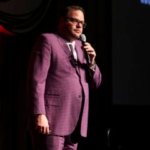We’d love for you to attend our open house. there will be 99 dishes, 15 colors of napkins, seating for 75, and two buffet tables. five speakers will present for 15 minutes each, while you watch in amazement. i bet you can’t wait!
Too often, this is the way meeting organizers market their events. If your marketing materials stress the numerical features of your conference — how long it has been around, how many CEUs, sessions, and speakers there will be, and the number of booths on the floor — stop now and start over.
You must focus on the attendees. Who are they? Who signs their paycheck? What’ s their job function? What urgent problems do they have that your conference will help solve? Who do they want to hang out with? Your marketing should be all about them, not about you.
Use what you know about them to write meaningful invitations by key segment. Interact with them like you would a friend. A personalized, targeted message is much better than a general email to all potential attendees. You would never send a “To Whom It May Concern” email — or an invitation that doesn’t give them the ability to reply to you, the sender. So why send out general promotional email blasts to your entire database? You want to convey to each potential attendee that they matter and that you understand their urgent needs.
Here’s how to make your marketing messages about attendee benefits.
1. It’s about them, not you.
Carefully check your copy. If you use the words “our” or “we” in your email or web communications, you’re not focusing on the customer. It’s not that you assembled 85 education sessions, but rather the tangible benefits that participants will gain — getting answers to problems they have. If you want to talk about your organization, use testimonials.
2. Permission to attend.
If your potential attendees need to gain approval from their boss in order to register, don’t focus your event marketing on the destination or awesome hotel you booked. Keep the focus on the business benefits, or you’ll lose the sale! The one exception to this would be if your participants tend to be the sole decision makers and/or bring along the family — and then, by all means, highlight the destination, amenities, and attractions. Many executives play by different rules.
3. Share photos.
Of actual conference attendees in all your communication pieces. This allows you to convey the diversity of your attendees in terms of age, gender, and race. Let the potential attendee see someone like them in your photos. Never, ever use stock photography.
4. Link to the critical stuff.
Attendees want to scan, bookmark, or print several things: a schedule at a glance, a list of who else is coming, and pricing. Don’t make any of these difficult to find.
5. Respect their time.
No one wants to read a 500-word email. Keep your messages succinct and your headlines tight and strong, with only one goal or call to action per communication piece. Trying to communicate too many ideas in one message is a surefire way to disenchant or confuse a potential buyer.
It’s nearly impossible to expect improved results without a marketing-segmentation strategy. At a minimum, conference marketing should be bucketed by 1) repeat attendees (came last year); 2) lapsed attendees (attended two or three years ago, but not last year); and 3) new attendee prospects. The invitation and call to action can clearly be articulated based on the relationship you share or desire.
The next step is to identify segments that you most want to grow. Usually these are defined by industry vertical, organization size, and job title. Identifying a few of your most-ripe attendee buckets will go a long way to improving relevance, open rates, and conversion.



